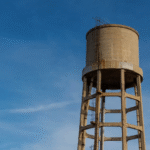Construction sites are teeming with dangers. They include heavy machinery, working at heights, and using power tools. That is why OSHA, the Occupational Safety and Health Administration, has set policies that govern all United States workers.
In this guide, we will tell you what the official OSHA construction standards are and how they are referred to. We’ll summarize it, including major rules, and describe why all construction workers need to understand them. Also discuss the OSHA 30 Hour Construction Training what is this and how it helps you to become OSHA Compliance easily. Following these rules, which are part of construction safety compliance, helps protect employees on the job. Read on.
Grasping OSHA Construction Standards: The Core of Site Security
OSHA is responsible for setting regulations to safeguard employees and workplaces across various sectors. Each industry, including construction, is regulated with policies tailored to its unique risks. These are known as the OSHA construction standards. They are documented policies that govern employers and employees to help mitigate injury and death.
These safety rules address everything from proper scaffold construction to the correct usage of personal protective equipment. They can be found in the OSHA safety manual under OSHA 29 CFR 1926. If you work in construction, these guidelines are mandatory to maintain OSHA compliance and obey federal law.
What Are the OSHA Construction Standards Also Called?
OSHA construction regulations are legally called Title 29 of the Code of Federal Regulations, Part 1926. This was shortened to 29 CFR 1926. While they are often referred to as the OSHA construction standards, there is a longer and more formal name.
So when someone asks “What is 29 CFR 1926” they are referring to a complete legal document which contains the construction safety regulations for a job site. This document addresses various issues such as fall protection, trenching, and electrical hazards. It is essentially the OSHA construction guidebook.
Why 29 CFR 1926 Matters in the U.S. Construction Industry
What does OSHA 1926 cover? It covers nearly every risk you might face at a worksite. It lists the required equipment, safe work practices, and safety protocols under OSHA. It’s designed to reduce workplace accidents and improve construction worker safety law enforcement.
OSHA inspectors use this rulebook during site visits. If a site is not following these rules, it can face fines or even be shut down. That’s why knowing the CFR OSHA standards breakdown is so important for contractors, site managers, and workers.
Major Sections of the OSHA Construction Standards You Should Know
OSHA regulations for construction are divided into subparts. Each subpart covers a topic like ladders, cranes, or protective gear. These are called 1926 subpart standards. Here are some of the most important ones:
| Subpart | Topic | Example Requirement |
| C | General Safety and Health Provisions | Employers must provide training |
| E | Personal Protective Equipment (PPE) | Workers must wear hard hats |
| K | Electrical Safety | All wiring must meet national standards |
| L | Scaffolding | Scaffolds must be properly supported |
| M | Fall Protection | Guardrails or safety nets must be in place |
Understanding these subparts helps you follow OSHA safety codes and meet all construction safety standards.
How to Stay Compliant with OSHA Construction Standards
Following the OSHA construction guidelines is not optional. It’s the law. To stay compliant, employers must follow safety rules, train workers, and keep records. This includes hazard communication, proper signage, and emergency plans.
Regular site inspections can catch issues early. Using checklists from the OSHA construction rulebook helps ensure that all construction hazard standards are followed. That way, your company avoids violations, and your team stays safe.
OSHA Construction Training Online: Preparing for the Real World
Training is key to meeting OSHA training requirements. Workers need to understand risks and how to avoid them. That’s where OSHA 30 hour construction training and OSHA 10-hour courses come in. These programs teach the basics of construction site compliance with OSHA.
OSHA 30 Construction is designed for supervisors and managers. It dives deeper into worksite safety regulations. Topics include inspections, hazard controls, and safety law in the construction industry. Many companies require this for leadership roles. You can take OSHA 30 online training through authorized providers. The OSHA 30 Certification cost ranges between $150 and $200, depending on the provider. But Get OSHA Courses is providing the same course at a very affordable and Cheap price for $99 only.
Resources to Learn More About OSHA Construction Rules
Learning more is easy. You can visit www.osha.gov to read about OSHA rules for builders and download the full OSHA safety manual. They offer guides, eTools, and online training help.
You can also check with local safety organizations or your state’s OSHA office. They may offer free training or resources to help with construction safety compliance.
Understanding OSHA Construction Standards Saves Lives
Define OSHA construction standards like this: it’s a law that protects you and your team at work. Understanding OSHA standard meaning helps prevent injuries, save money, and protect lives. It’s more than paperwork—it’s about getting home safe every day.
The purpose of OSHA regulations is to protect workers from dangers. So, whether you’re a laborer or a site manager, knowing how to comply with OSHA 1926 could save someone’s life. It might even be your own.
FAQ Section:
What is the difference between OSHA 30 General industry and OSHA 30 construction?
The difference lies in the focus. OSHA 30 General Industry is for factory and warehouse workers. OSHA 30 Construction is for job sites and deals with fall risks, scaffolds, and other field hazards. It aligns with construction safety standards.
What are the 4 categories of OSHA standards?
OSHA has four main categories: General Industry, Construction, Maritime, and Agriculture. Each has its own rules and codes. The construction category follows the OSHA 29 CFR 1926 standard.
What are 29 CFR parts 1915, 1917, and 1918 referred to as?
These parts are for the Maritime Industry. They cover shipyard employment (1915), marine terminals (1917), and longshoring (1918). They are different from 29 CFR 1926, which is specific to construction site compliance with OSHA.






